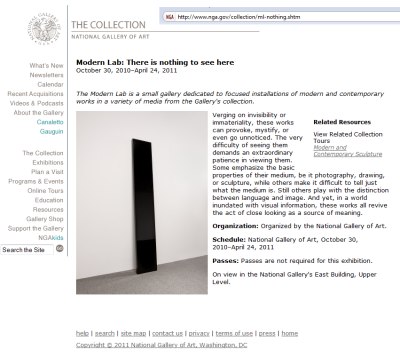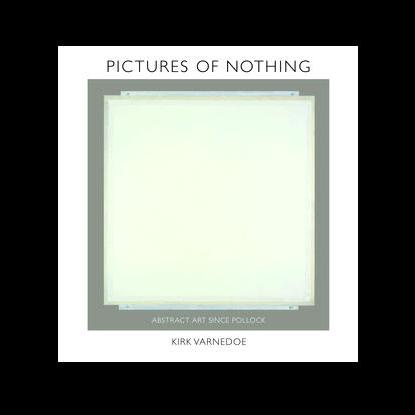Pictures of Nothing
‘”The artist delights to go back to the first chaos of the world… All is without forms and void. Some one said of his landscapes that they were pictures of nothing, and very like.”
— William Hazlitt, 1816, on J. M. W. Turner
“William Hazlett [sic] once described Turner’s painting as ‘pictures of the elements of air, earth, and water. The artist delights to go back to the first chaos of the world…All is without form and void. Some one said of his landscapes that they were pictures of nothing and very like.‘ This description could equally well be applied to a Pollock, Newman, or Rothko.”
— Sonja J. Klein, thesis, The Nature of the Sublime, September 2000
The fifty-second A. W. Mellon series of Lectures in the Fine Arts was given last spring at the National Gallery in Washington, D.C., by Kirk Varnedoe, art historian at the Institute for Advanced Study, Princeton, New Jersey.
| The lecture series was titled
Pictures of Nothing:
Abstract Art since Pollock.
The lectures, 2003:
Why Abstract Art? … March 30
Survivals and Fresh Starts … April 6
Minimalism … April 13
After Minimalism … April 27
Satire, Irony, and Abstract Art … May 4
Abstract Art Now … May 11 |
Varnedoe died on Thursday, August 14, 2003,
the day of the Great Blackout.
Pictures of Nothing:
“Record-breaking crowds turned up at the National Gallery for Kirk’s Mellon Lectures….
… the content of Kirk’s talk was miraculously subtle, as he insisted that there could be no single explanation for how abstraction works, that each piece had to be understood on its own terms — how it came to be made, what it meant then and what it has gone on to mean to viewers since.
Dour works like
Frank Stella’s early
gray-on-black canvases …

“Die Fahne Hoch,”
Frank Stella,
1959

“Gray on Black,”
or “Date of Death”
seemed to open up under Kirk’s touch to reveal a delicacy and complexity lost in less textured explanations.”
— Blake Gopnik in the Washington Post,
Aug. 15, 2003
For another memorial to Varnedoe, see
Fahne Hoch.
A May 18 Washington Post article skillfully summarized Varnedoe’s Mellon Lectures at the National Gallery:
Closing the Circle on Abstract Art.
For more on art and nihilism, see
The Word in the Desert.
















